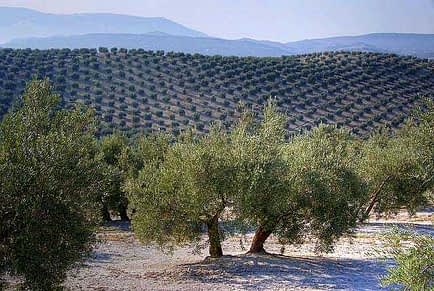Spain Denies it Produces Too Much Olive Oil

Spain says it disagrees with European Commission forecasts that it will end 2020 with annual production at 1.68 million tons and carryover stocks of 881,000 tons.
The world’s largest olive oil producer estimates production of about 1.4 million tons and says it is unlikely there will be any surplus. Furthermore, it disputes the EC’s assessment that Spain overproduces olive oil and has a “structural surplus.”
The views were set out in a July 12 document sent by Spain’s Agriculture Minister Miguel Arias Cañete to European Commissioner for Agriculture Dacian Cioloş. It contained Spain’s initial response, in Spanish, to the draft action plan for the EU olive oil sector. A copy of it was obtained by Olive Oil Times under EU freedom of information rules.
The draft plan and an accompanying EC brief it was based on, “Prospects for the Olive Oil Sector in Spain, Italy and Greece — 2012 – 2020” contained the projections that Spain says are not sufficiently justified.
EC forecast
According to the 2020 brief, the area of olive groves in Spain is likely to rise 70,000 ha by 2020 to 2.54 million hectares.
Olive oil production of about 1.68 million tons is expected for 2020, compared to less than 1.50 million in 2011, but could vary between 1.43 and 1.86 million tons.
Domestic consumption is expected to stay at 13kg/year per person, exports to grow from 840,000 tons in 2011 to 1.047 million in 2020, and no change in imports.
Overall, the EC brief projects an average annual accumulation of 27,000 tons to see Spain’s total carryover stocks grow from 635,000 tons at the end of 2011/12 to 881,000 for 2020/21.
“Spain currently overproduces olive oil. This structural surplus deepens imbalances in bargaining power in the production chain,” the draft action plan said.
Spain’s estimates
But the document sent by Arias Cañete says the area of olive cultivation in Spain has practically stabilized, “as a consequence of the low prices of recent years,” and won’t be much higher than 2.5 million ha in 2020.
It estimates olive oil output in 2020 could range from 1.1 to 1.65 million tons, with an average of about 1.4 million tons — the amount of olive oil that Spain says it already sells in a year.
Spain considers its record harvest of 1.6 million tons in 2012 reflected ideal weather during cultivation and was atypical.
“Yields have shown strong variations in recent years from a minimum of 350 kg/ha up to a maximum of 650 kg/ha, showing the dependence of the harvest on weather conditions,” it wrote.
At its existing rate of sales and with exports on the rise, the most likely scenario is that the current surplus (which the latest estimates put at 591,600 tons) “will gradually be eroded.”
“Given the harvest forecasts and the amount of trade in recent years, carryover stocks are not expected in the year 2020,” Spain said.
“The assessments in the Commission’s document on the state of the olive oil market and the outlook for Spain should be subject to further study,” it said.









